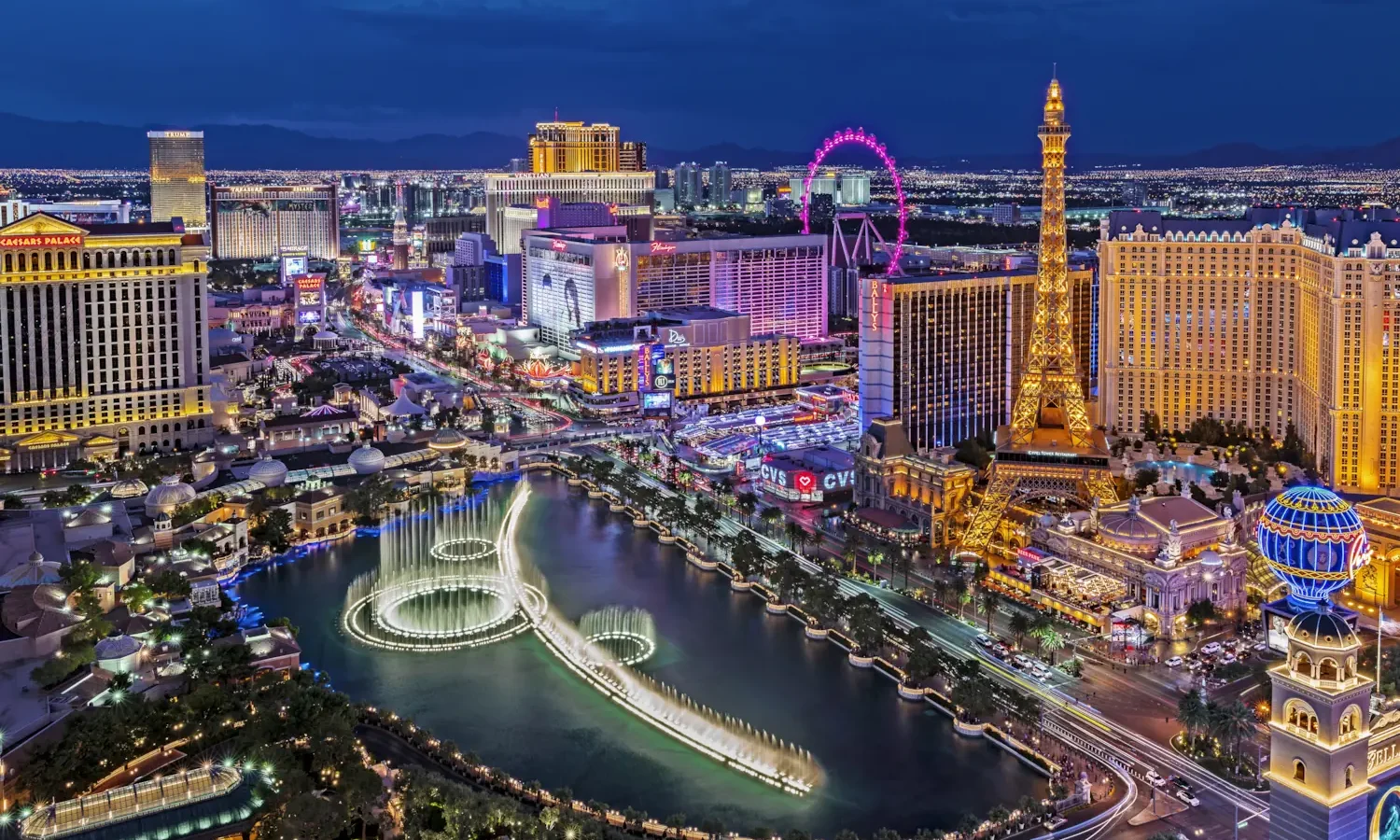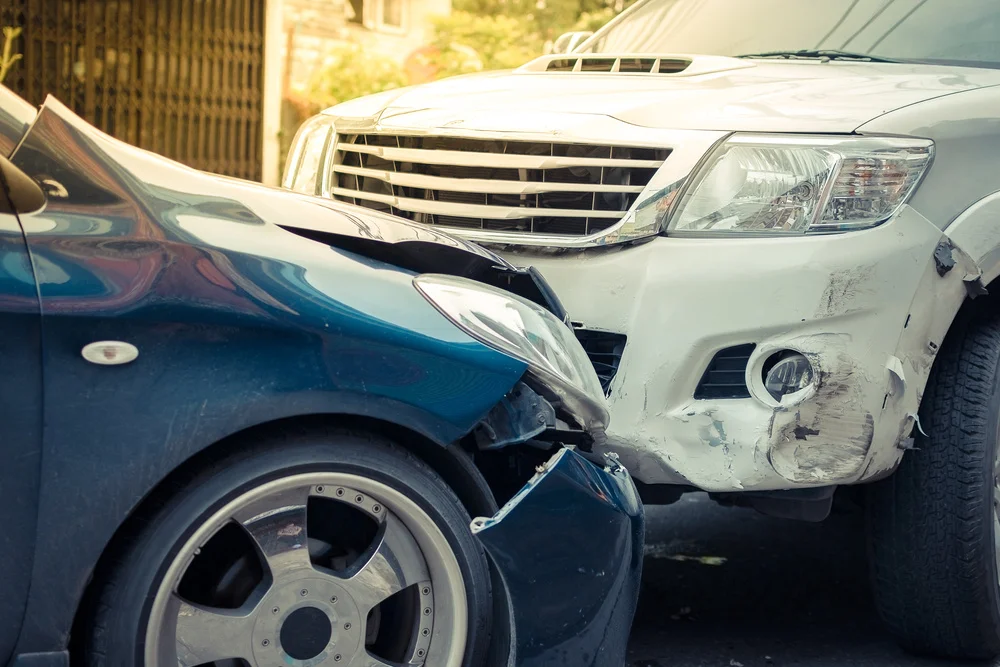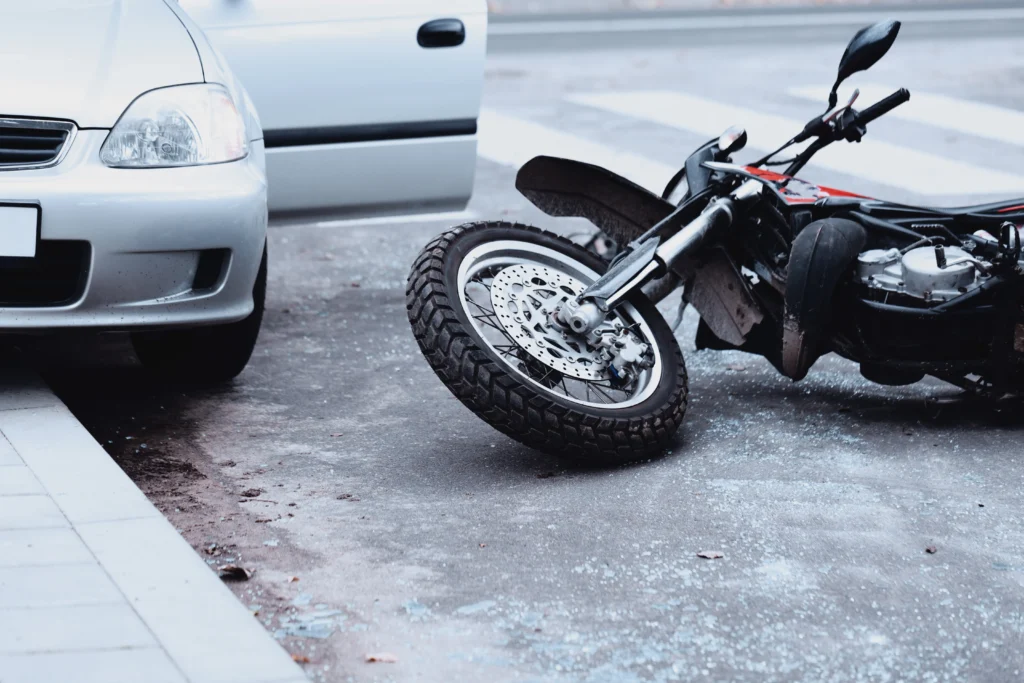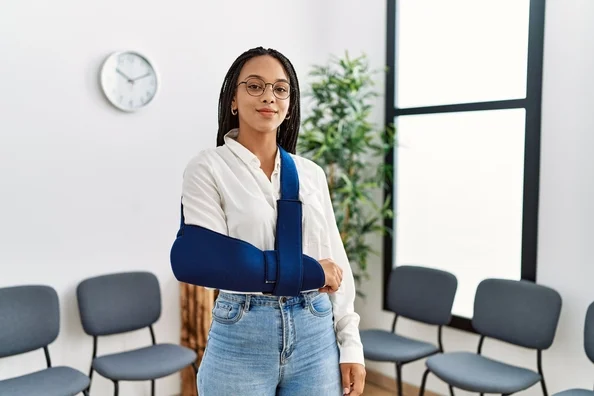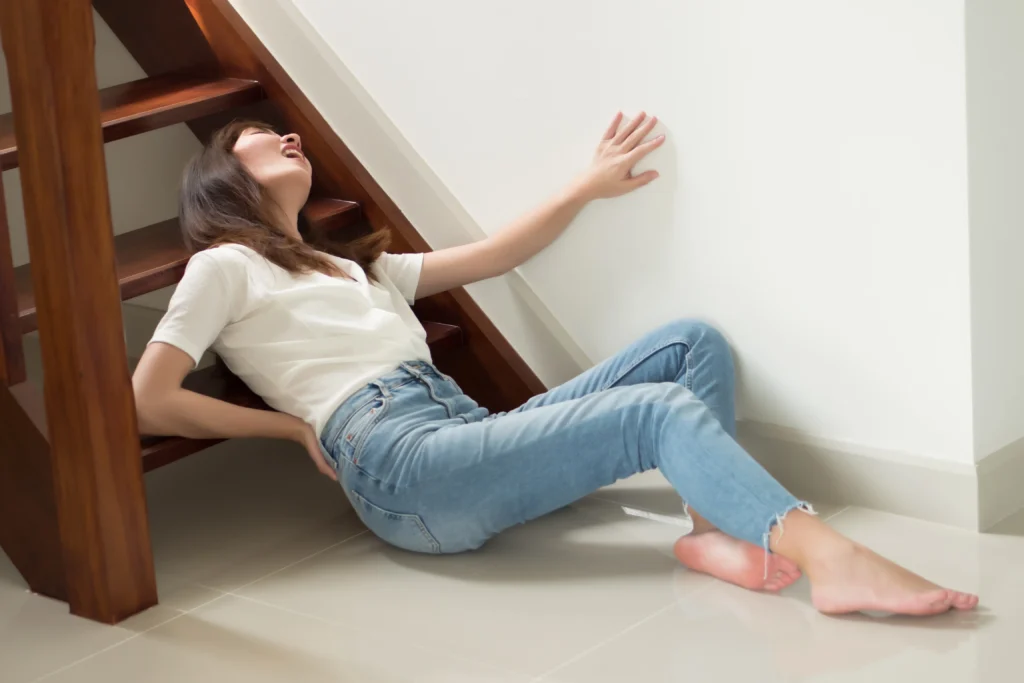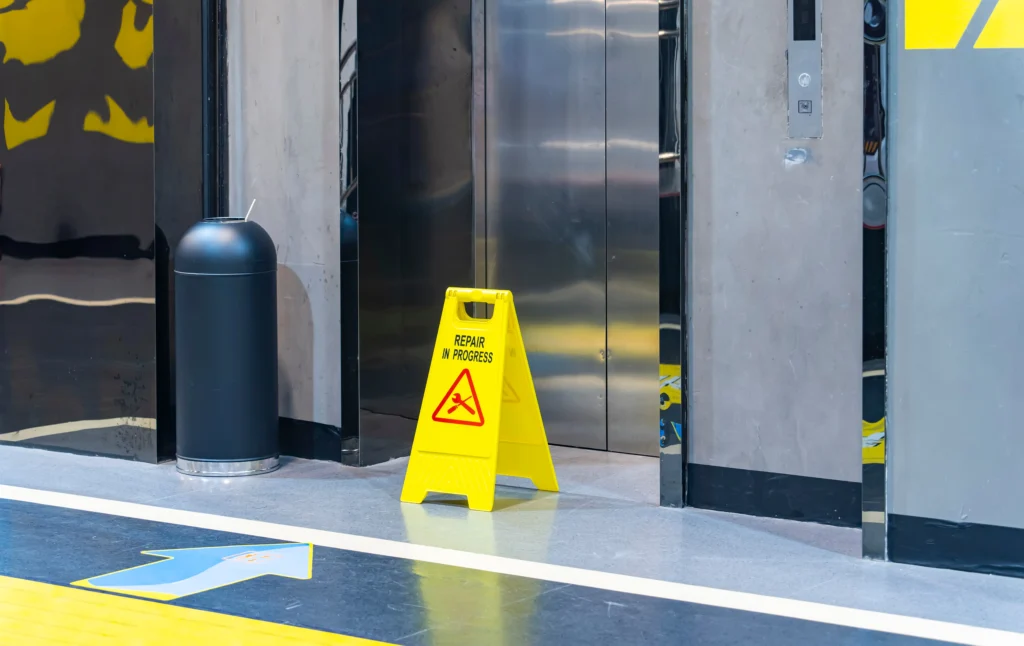Mandalay Bay Injury Lawyer – Get Justice After a Resort Accident
At first glance, Mandalay Bay delivers the ultimate Las Vegas experience—lush pools, upscale dining, concerts, and ocean-inspired ambiance. But beneath the glow of its gold-tinted windows and sprawling resort grounds, real dangers can emerge. We’ve represented guests who slipped on soaked tile at Mandalay Beach, fell on steep, dimly lit escalators in The Shoppes at Mandalay Place, or were injured exiting a packed show at House of Blues where floor hazards went unmarked. In many of these cases, the resort failed to act before or even after the incident occurred.
These aren’t one-off misfortunes. They’re the result of neglected safety protocols, poor staff training, or delayed maintenance—failures that can leave guests with broken bones, concussions, or worse. According to the National Safety Council (NSC), falls are the second leading cause of unintentional injury-related deaths in the U.S., and one of the most preventable causes of injury in public spaces like resorts (NSC: Injury Facts – Falls). And under Nevada law (NRS 41.130), hotel and casino operators are legally responsible for keeping their properties reasonably safe for visitors (Nevada Legislature – Premises Liability Statute).
At Jerez Law, we know how overwhelming it is to suffer an injury far from home, especially in a place that promises relaxation and escape. We’ve helped clients not just recover financially—but reclaim their sense of safety and control. If your visit to Mandalay Bay ended with an ambulance ride, a hospital bill, or persistent pain, don’t let the resort dismiss your experience. You deserve to be heard—and fully compensated.
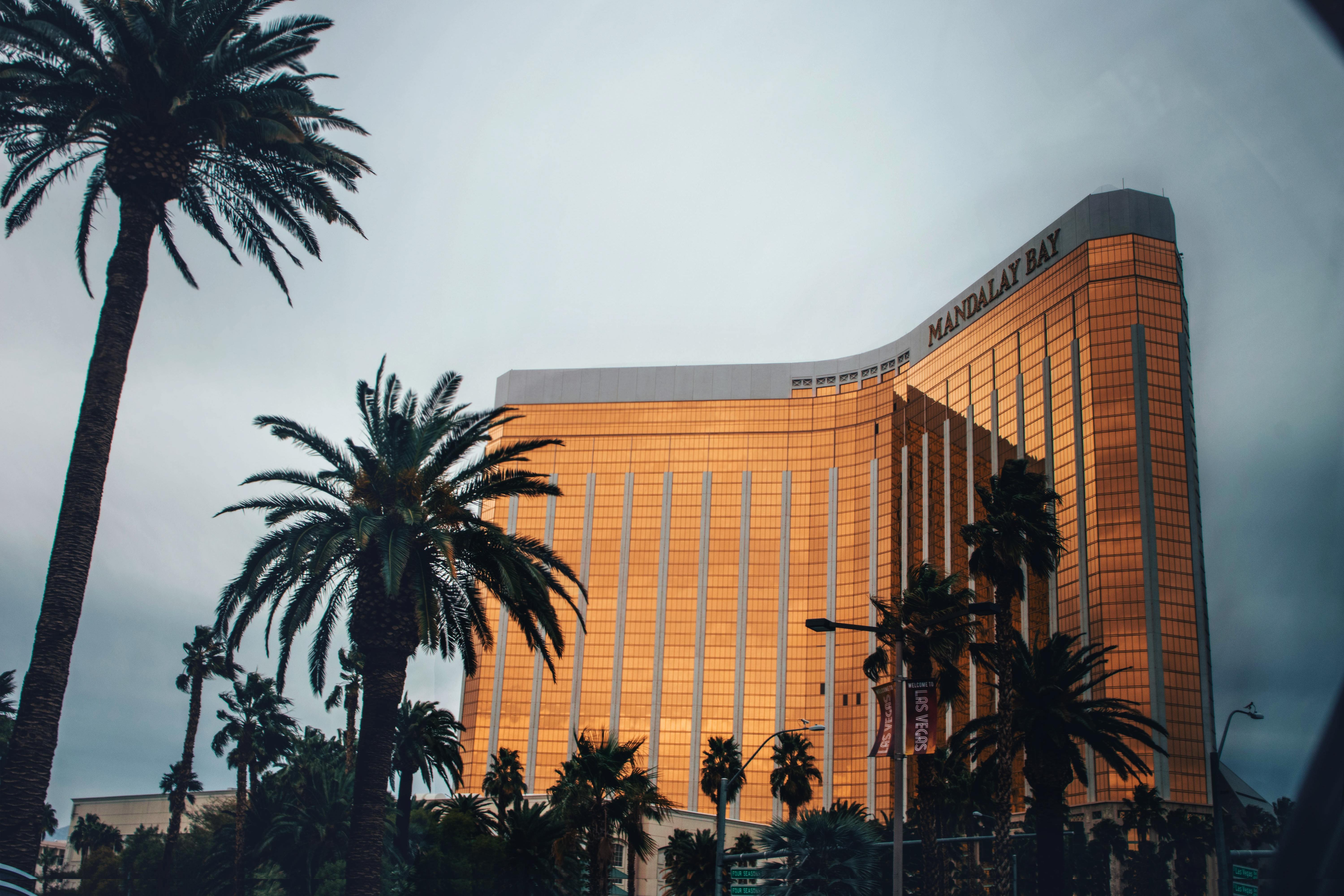
Why Choose Jerez Law for a Mandalay Bay Injury Claim?
Mandalay Bay combines a luxury hotel, casino, beach-style pool area, retail district, and live concert venues into a single mega-property. That complexity means legal cases involving Mandalay Bay demand a deep understanding of resort operations, liability protocols, and hotel defense tactics.
Whether your injury happened at the Shark Reef, in a hotel suite elevator, during a trade show at the Convention Center, or from a slip on the wave pool steps, we move quickly to secure surveillance, collect statements, and build a case backed by medical and engineering experts.
Clients trust Jerez Law for:
- Proven experience with luxury hotel injury cases
- In-depth knowledge of resort maintenance and liability
- Immediate evidence preservation from security systems
- Personalized attention and compassionate legal support
- Relentless pursuit of fair compensation—no lowball settlements
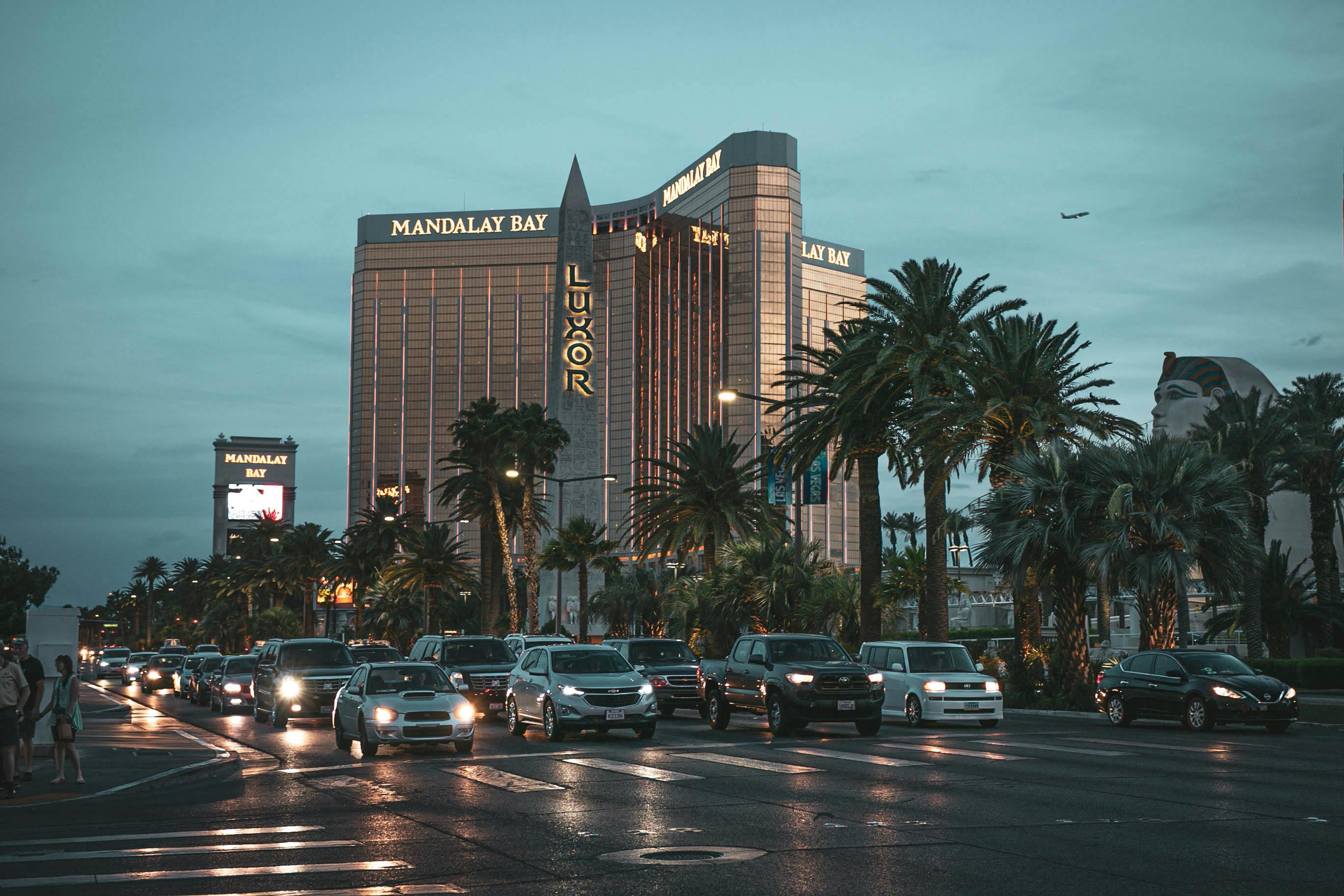
Common Injury Locations at Mandalay Bay
Mandalay Bay isn’t just a hotel—it’s a sprawling entertainment and hospitality complex that includes luxury suites, a 1.6-million-gallon wave pool, multiple event spaces, a massive casino floor, and a retail connector to the Luxor. While the experience is designed to be immersive, many of the features that make the resort exciting also create numerous safety risks—especially when proper maintenance, signage, or staffing is lacking.
According to the National Institute for Occupational Safety and Health (NIOSH), the most common environmental contributors to slip-and-fall accidents in hospitality venues are wet surfaces, poor lighting, and crowd-related obstructions—all of which are present in high-traffic resort spaces like Mandalay Bay (NIOSH: Falls in the Workplace).
Mandalay Beach and Wave Pool
Mandalay Bay’s beach area is unlike any other on the Strip, featuring real sand, a wave pool, and a lazy river. But what makes this space a standout attraction also makes it a high-risk zone for injuries:
- Slippery sand gets tracked onto tiled paths and boardwalk-style flooring, creating nearly invisible slick patches
- Wave motion and sudden drop-offs in the pool may catch guests off guard, especially children or older adults
- Wet stairwells and railings near pool entries often lack anti-slip surfacing or proper warning signage
- During private cabana rentals, concerts, or poolside events, staff are often overwhelmed or slow to address hazards
Guests have reported fractures, ACL/MCL tears, ankle sprains, and head injuries from slipping on wet walkways, diving into shallow areas, or falling near the edge of wave-producing zones. Many are shocked to learn there were no staff or lifeguards present when the incident occurred.
The Shoppes at Mandalay Place
The Mandalay Bay–Luxor walkway, lined with boutique shops, restaurants, and cocktail stands, draws heavy foot traffic throughout the day and night. However, this area is notoriously prone to maintenance and visibility issues:
- Curled or loose rugs at store entrances can snag shoes or trip guests using wheelchairs, walkers, or strollers
- Escalators and stairwells between levels are dimly lit, increasing fall risks—especially for older visitors
- Drink spills from nearby eateries or guests carrying cocktails from connected casino floors often go unnoticed
- Transitions between tile, carpet, and stone flooring are uneven and can create unexpected trip hazards
Visitors have suffered wrist fractures, concussions, and elbow dislocations after sudden, jarring falls in these high-traffic areas—especially during peak weekend hours or events.
House of Blues and Event Venues
With multiple entrances, multi-level seating, and fast-moving crowds, the House of Blues and adjoining Mandalay Bay Events Center are prime areas for chaotic foot traffic and poor hazard control. These risks intensify at night and during high-capacity events.
Common dangers include:
- Cramped, dark exit pathways after a show, often with insufficient crowd management
- Sticky or slippery flooring from spilled drinks and limited cleaning staff during peak hours
- Unmarked steps or risers around stage areas or temporary constructions zones
- Metal barricades, cables, or equipment improperly placed along floor-level walkways
We’ve helped guests recover compensation for back injuries, shoulder strains, facial trauma, and knee injuries sustained after slipping, tripping, or being knocked down by crowd surges or unclear venue layout.
Hotel Rooms, Elevators, and Guest Hallways
Even Mandalay Bay’s guest suites and common corridors can be deceptively dangerous, especially when routine maintenance is delayed or when rooms are turned over too quickly during busy seasons.
Frequent injury conditions include:
- Smart-room malfunctions, such as heavy auto-closing doors or faulty lighting panels
- Elevator accidents, including abrupt stops, misalignments with flooring, or lurching motions
- Unseen puddles from leaking showers, bathtubs, or clogged drains in bathrooms
- Trip hazards from raised carpeting, exposed metal strips, or improperly placed luggage racks
We’ve seen cases involving herniated discs, sprains, soft tissue damage, and lacerations resulting from poorly maintained suite infrastructure or hallway obstructions—particularly in towers with older elevator systems.
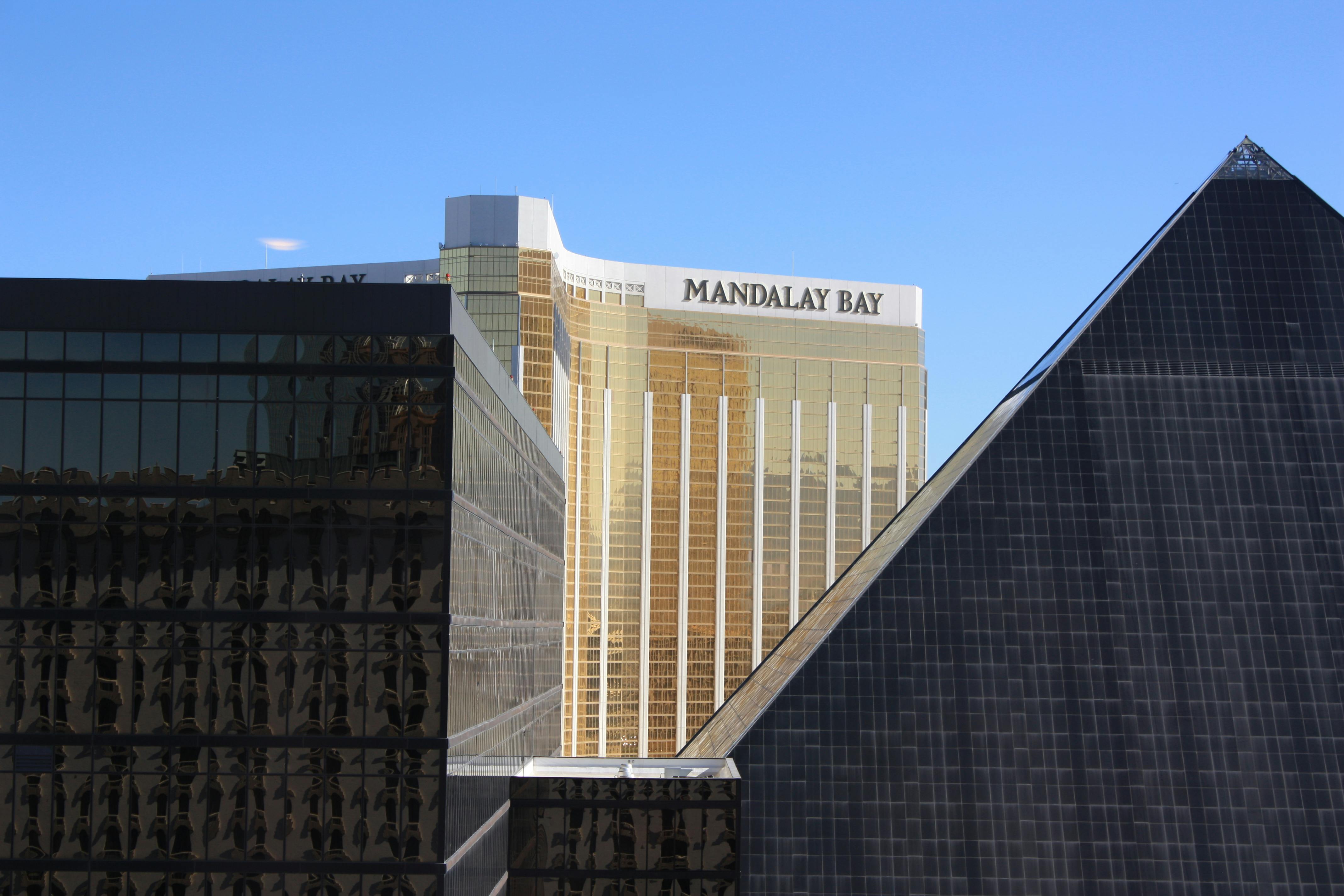
Types of Injuries Sustained at Mandalay Bay
Injuries at a resort as expansive as Mandalay Bay are rarely just bad luck—they’re often the direct result of ignored hazards, poor crowd control, and failure to enforce safety protocols in high-risk zones. From the wave pool to the House of Blues, guests navigate a labyrinth of wet surfaces, crowded escalators, dark stairwells, and unsecured equipment every day.
According to the National Institute of Neurological Disorders and Stroke (NINDS), injuries such as traumatic brain injuries, spinal cord trauma, and soft tissue damage can have long-term consequences—including mobility loss, cognitive impairment, and chronic pain (NINDS: Neurological Injuries). Below are the most common injury types guests sustain at Mandalay Bay—and where they most often happen.
Head Injuries and Concussions
Head injuries are particularly common in high-energy, poorly lit, or wet environments across the property. At Mandalay Beach, guests have slipped on slick tile near the wave pool, falling hard onto the back of their heads. Others have hit their heads on railings or cement benches while navigating crowded pool areas.
At House of Blues, guests often fall in darkened aisles, backstage pathways, or tight staircases with minimal lighting or no handrails. Overhead signage, temporary staging elements, or lighting rigs have also caused blunt trauma in some cases.
These head impacts can result in:
- Concussions with delayed symptoms like confusion or nausea
- Cognitive issues including short-term memory loss
- Migraines and sensitivity to light and sound
- Anxiety, sleep disruption, and emotional swings
Prompt diagnosis and treatment are essential, as untreated concussions can lead to long-term neurological problems.
Broken Bones and Fractures
Fractures often happen when guests fall unexpectedly due to wet or uneven surfaces, abrupt changes in flooring, or structural failures. At The Shoppes at Mandalay Place, multiple flooring textures (tile, carpet, stone) lead to subtle elevation changes that trip unsuspecting guests, particularly the elderly.
At Mandalay Bay elevators or stairwells, a sudden jolt or poorly lit descent can lead to a wrist fracture from bracing a fall. Poolside at Mandalay Beach, unsealed surfaces become slippery with sunscreen, sand, or spilled drinks.
Common fractures include:
- Wrists or elbows from using hands to break a fall
- Ankles and knees from uneven landings on pool steps or staircases
- Hips, especially in older guests, from backwards falls on tile
- Collarbone or rib fractures from blunt force or being struck during crowd surges
These injuries often require surgical fixation, immobilization, and long-term physical therapy.
Spinal and Back Injuries
Spinal injuries can result from sudden jerking motions or traumatic falls that compress or twist the spine unnaturally. These are especially common on:
- Escalators connecting Mandalay Bay to Luxor, where abrupt stops or missteps can throw guests off balance
- Wave pool entries and exits, where water traction changes abruptly on stairs and walkways
- Exhibit halls and event spaces, where cluttered temporary layouts and tripping hazards go unaddressed
We’ve seen spinal trauma cases where guests develop:
- Herniated or slipped discs
- Sciatica and nerve compression
- Chronic lower back pain and muscle spasms
- Loss of range of motion requiring steroid injections or surgery
Back injuries often go unreported initially—until symptoms worsen days later. That’s why it’s critical to seek a full diagnostic evaluation even for what may seem like a “minor” fall.
Cuts, Lacerations, and Soft Tissue Damage
These injuries are often overlooked but can have serious consequences—especially if acquired in communal or unsanitary areas. Common scenarios include:
- Cracked tile in spa locker rooms or bathroom thresholds causing deep foot lacerations
- Sharp furniture edges in cabanas or pool lounges that cut arms or legs during minor slips
- Glass from broken barware at event venues like House of Blues or Foundation Room
- Metal frames or brackets under sun loungers that cause abrasions or gouges when guests sit or fall
Soft tissue injuries like ligament tears, muscle strains, or sprained ankles are also common—often occurring during sudden stumbles near stairs or while catching oneself mid-fall.
These may require:
- Emergency stitching or wound cleaning
- Antibiotics to prevent infection
- Orthopedic bracing or rehab for strains and sprains
- Cosmetic revision surgery for deep or scarring lacerations
Medical Compensation for Injuries Suffered at Mandalay Bay
If you were injured at Mandalay Bay, you’re likely dealing with more than just the shock of the accident. What follows is often a cascade of medical appointments, diagnostics, and treatment plans—all of which come with a financial burden. From emergency trauma care after a fall on slippery tile to long-term rehabilitation after surgery, these costs add up quickly and can disrupt your life well beyond your time in Las Vegas.
At Jerez Law, we understand how a single incident at a resort—especially one as expansive and fast-paced as Mandalay Bay—can trigger a chain of physical consequences. That’s why we focus on helping clients pursue precise, documented, and long-term medical compensation for the real costs of getting well. If you’ve had to navigate the health care system because of injuries sustained near the wave pool, in a hotel stairwell, or on an escalator in the Shoppes at Mandalay Place, here’s what you may be entitled to recover:
Emergency Response and Acute Care
Many Mandalay Bay injury victims require immediate emergency care. The resort’s active environment—featuring a wave pool, crowded venues, and a massive casino floor—frequently leads to serious slip-and-fall incidents, blunt-force trauma, or mobility-related accidents.
Typical costs covered include:
- Paramedic transport to Las Vegas hospitals (e.g., Sunrise or UMC)
- ER services for trauma evaluation, stitches, or fracture stabilization
- Initial imaging such as X-rays or head CT scans
- Medications administered during acute care
- Overnight monitoring or observation
The American College of Emergency Physicians outlines that even a single ER visit can cost thousands of dollars, depending on diagnostics and treatment level (ACEP: Emergency Care Costs). These costs are fully compensable under Nevada’s premises liability statutes when caused by resort negligence.
Surgery and Post-Operative Recovery
When fractures, dislocations, or torn ligaments are involved—especially common after falls on staircases near the House of Blues, or slips on Mandalay Beach tile—surgery may be required. Many guests don’t realize how quickly a minor fall can escalate into a multi-stage medical ordeal.
You may be eligible for compensation for:
- Orthopedic surgery (e.g., pins, plates, joint reconstruction)
- Hospital room and operating suite charges
- Anesthesia and post-surgical medications
- Follow-up wound care or suture/staple removal
- Lodging or travel accommodations if return was delayed due to surgery
Injuries requiring surgical intervention are often associated with longer disability timelines, making accurate medical billing and documentation essential.
Diagnostic Imaging and Specialist Consultation
Diagnosing resort-related injuries can be complex—particularly when internal damage, soft tissue trauma, or neurological symptoms are involved. Many injuries worsen without immediate care or proper imaging, especially head injuries from bathroom falls or spinal issues from escalator jerks.
Covered diagnostic expenses may include:
- MRIs for soft tissue, ligament, or spinal injuries
- CT scans of the brain or spine for trauma analysis
- Neurological evaluations for dizziness, numbness, or tingling
- Orthopedic consults to assess bone and joint damage
- Repeat testing to monitor progress or detect complications
According to the National Institutes of Health, diagnostic imaging is often underutilized in trauma patients—but is vital in identifying injuries that are otherwise invisible to the eye (NIH: Importance of Imaging in Trauma).
Physical Rehabilitation and Mobility Assistance
After the acute phase of injury treatment, many victims require weeks—or months—of physical rehabilitation. This is especially true for guests who suffered muscle tears at the wave pool, ankle sprains in shopping walkways, or post-operative limitations following joint surgeries.
We help clients recover the cost of:
- In-office physical therapy sessions
- At-home recovery tools such as resistance bands or mobility rollers
- Bracing and orthopedic supports (knee braces, walking boots)
- Rental or purchase of walkers, crutches, or wheelchairs
- Occupational therapy for regaining mobility or workplace function
These aren’t optional—they’re medically necessary, and they deserve full financial support under Nevada law.
Long-Term Follow-Up Care and Maintenance
Some injuries don’t heal quickly—or ever fully. We’ve worked with clients who returned home only to discover their pain persisted, mobility worsened, or new complications emerged. When an injury at Mandalay Bay leads to chronic health concerns, follow-up care becomes essential.
Long-term compensation can include:
- Chronic pain management (injections, pain clinics, prescription coverage)
- Repeat orthopedic or neurological evaluations
- Maintenance therapy for degenerative changes or scar tissue
- Assistive living aids if mobility is permanently impaired
Even if your injury didn’t seem severe at first, don’t wait to seek follow-up care. We work closely with physicians to ensure your ongoing treatment needs are factored into every settlement demand.
You Deserve More Than a Comped Drink—You Deserve Real Justice
If your visit to Mandalay Bay ended in pain, confusion, or a hospital room, you’re not alone—and you’re not powerless. Whether you slipped by the wave pool, were injured on a dark escalator, or fell in a crowded concert venue, the aftermath can be overwhelming: medical bills, unanswered questions, and a resort that seems more interested in preserving its image than helping you recover.
At Jerez Law, we’ve helped countless hotel guests—tourists, business travelers, and locals—hold powerful resorts accountable for injuries they tried to downplay or dismiss. We act fast to preserve security footage, collect witness statements, and bring in medical and engineering experts to build your strongest case. You don’t have to fight this alone—and you shouldn’t.
Let us turn your experience into a clear legal strategy. You focus on healing—we’ll handle everything else.
📞 Call Jerez Law now or visit www.jerezlaw.com for a free, no-obligation consultation.
Practice Areas
Trust Jerez Law With Your Personal Injury Claim
If you or a loved one have been injured, Isaiah Jerez and his associates will fight for you every step of the way. We will give our all to secure the compensation you rightfully deserve.
